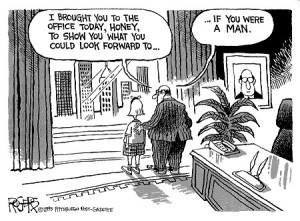What does transgender mean? According to the American Psychological Association (APA), the term is “used to describe people whose gender identity (sense of themselves as male or female) or gender expression differs from that usually associated with their birth sex”. Very important, transgender people should not be referred to as “transgendered”.
Federal law protects against employment discrimination based on race, gender, religion, national origin or disability, but not sexual orientation or gender identity. Currently, there are 12 states and the District of Columbia that have policies that protect against both sexual orientation and gender identity discrimination in employment: California, Colorado, Iowa, Illinois, Maine, Minnesota, New Jersey, New Mexico, Oregon, Rhode Island, Vermont, and Washington.
Those from New York are wondering why the state is not included. Well, New York has state laws that protect against discrimination based on sexual orientation only!
A bill called Employment Non-Discrimination Act (ENDA), (H.R. 3017), would provide basic protections against workplace discrimination based on sexual orientation or gender identity. The bill is closely modeled on existing civil rights laws including Title VII of the Civil Rights Act of 1964 and the Americans with Disabilities Act. The bill was introduced in the House by Representatives Barney Frank (D-MA) and Ileana Ros-Lehtinen (R-FL) in the House and in the Senate by Senators Jeff Merkley (D-OR) and Susan Collins (R-ME) on September 23, 2009.
Rep. Barney Frank testifies at a hearing regarding H.R. 3017, Employment Non-Discrimination Act of 2009 on September 23, 2009.






